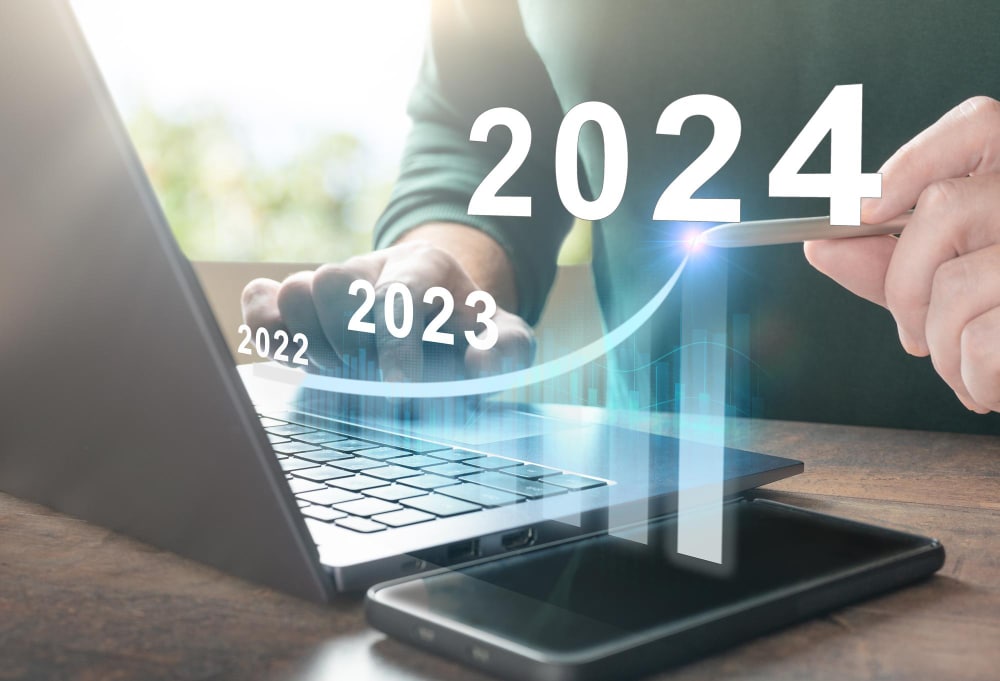Table of Contents
In today’s world, convenience is essential, with everything expected to be accessible via smartphones. The pandemic accelerated online shopping, pushing brands to rethink their strategies to stay competitive. To meet this heightened demand, successful brands focus on providing seamless experiences through multichannel vs. omnichannel approaches, ensuring their communications remain conversational and accessible.

While adapting to change, many may wonder: What’s the difference between a multichannel vs. omnichannel strategy?
You must understand these two strategies to put your customers first and make more informed, data-driven decisions about your marketing efforts. To better navigate your plan, let’s explore key differences between multichannel and omnichannel marketing.
What is Multichannel?
Multichannel marketing uses online and offline media to engage with customers and potential prospects. These channels include messaging, TV, print, social media, voice, in-store interactions, email, and billboards.
Each channel in a multichannel strategy operates independently, meaning customers must access that channel to find the necessary information. As a result, messages between channels may not be synchronized, potentially leading to a fragmented customer experience.
Multichannel marketing focuses on reaching customers on their preferred channels, aiming to deliver personalized information that effectively promotes a brand’s products.
Pros of Multichannel:
- Extensive Reach: Allows you to connect with customers where they are.
- Channel Versatility: Leverages the unique benefits of different communication channels.
Cons of Multichannel:
- Product-Centric: Tends to prioritize product promotion over customer experience.
- Complex Management: Coordinating and tracking interactions across multiple channels can be challenging.
- Measurement Difficulties: It is often hard to track performance and ROI accurately.
How Does Multichannel Marketing Work?
Multichannel marketing involves using various channels, such as email, SMS, display ads, TV, and print, to connect with customers. This strategy enhances your company’s reach but maintains each channel separately. For instance, the content and style of a LinkedIn ad might differ significantly from a promotional SMS.
If a customer engages with one channel and then switches to another, they might feel like they are starting a new conversation. This lack of continuity can be frustrating, as it may require them to repeat information or fill in gaps from past interactions.
To optimize a multichannel strategy, it’s crucial to utilize the strengths of each channel, ensuring they contribute towards a unified business goal. This often involves customizing content and messages to suit each platform’s unique style.
What is Omnichannel?
Omnichannel marketing also employs multiple channels for customer engagement, similar to multichannel. However, unlike multichannel, omnichannel strategies integrate these channels to create a unified, customer-centric experience. This seamless integration enables better tracking and attribution of customer interactions across various touchpoints.
An omnichannel approach ensures you can monitor customer activities on every platform. This data enables personalized marketing campaigns that leverage customer behavior and purchase history to enhance engagement.
A well-executed omnichannel strategy increases customer engagement, loyalty, and retention rates.
Pros of Omnichannel:
- Customer Centricity: Focuses on delivering a consistent experience across all channels.
- Flexible Communication: Offers more coherent and integrated communication options.
- Seamless Transition: Provides a smooth flow as customers switch between channels.
- Scalability: Easily adapts to support business growth.
Cons of Omnichannel:
- High Investment: Requires substantial resources in technology and infrastructure.
How Does Omnichannel Marketing Work?
Omnichannel marketing harmonizes branding, messaging, and customer touchpoints across all online and offline channels to create a smooth customer journey. It ensures consumers experience a cohesive flow navigating different channels, platforms, and devices.
In today’s landscape, consumers engage with brands through diverse channels—from social media to customer service calls. Omnichannel marketing centers around the customer, aiming to deliver a consistent and positive experience across all channels. This strategy erases the boundaries between different sales and marketing channels, fostering a cohesive and integrated approach.
The Advantages of an Omnichannel Marketing Strategy
Omnichannel marketing is a sophisticated approach gaining traction among large brands globally. On a CX Education episode, Chad White from Oracle Marketing Consulting emphasized the critical need for understanding audience preferences across various channels.
He stated,
“We’re in the omnichannel age, with no email versus anything. There’s no SMS versus anything, social versus anything… a really important point is to know your audience, and then also to know their receptiveness to message in a particular channel.”
- Seamless, Consistent Customer Experience:
Omnichannel strategies unify and route traffic through a single API encompassing digital marketing, conversational AI, and live chat tools. This integration allows customers to seamlessly pick up where they left off on any channel, ensuring a cohesive experience.
- Data-driven Insights:
Integrated systems in omnichannel marketing enable the collection and utilization of data across various touchpoints. This data is instrumental in understanding and meeting customer needs more effectively, allowing for the optimization of marketing campaigns tailored to the behaviors of different target audiences.
- Improved ROI:
Omnichannel strategies enhance customer satisfaction and retention by enabling engagement through preferred customer channels. These are critical factors in improving return on investment. A well-executed omnichannel approach often translates to higher customer lifetime values.
- Enhanced Product Discovery Experiences:
Omnichannel marketing utilizes customer data to offer personalized product recommendations and tailored shopping experiences. This customization enhances customer interaction with the brand, increasing sales and loyalty.
- Supercharged Sales:
Integrating data across all marketing, support, and sales channels under an omnichannel strategy boosts sales figures. It ensures that each customer interaction is an opportunity to gather insights and enhance their experience.
Business Impacts of Integrated Channels:
- Consistency Across Touchpoints: Businesses can maintain a consistent brand voice and customer experience across all channels.
- Leverage Data Insights: Implementing data-driven strategies becomes feasible, increasing the effectiveness of marketing efforts.
- Boost in Marketing ROI: With more precise targeting and personalization, companies see a significant improvement in marketing spend efficacy.
Omnichannel vs. Multichannel
| Aspect | Omnichannel Marketing | Multichannel Marketing |
|---|---|---|
| Definition | Integrates all channels to create a seamless customer experience. | Data collected from all channels is used to enhance personalization and customer understanding. |
| Customer Focus | Centers on creating a consistent and seamless experience across all channels, putting the customer’s needs at the forefront. | Focuses on reaching customers through multiple channels without necessarily integrating them. |
| Channel Integration | Channels are fully integrated, allowing for a unified experience where customers can switch seamlessly between them. | Data collected from all channels is used to enhance personalization and customer understanding. |
| Data Utilization | Uses data collected from all channels to enhance personalization and customer understanding. | Each channel might collect data independently, making it harder to consolidate insights. |
| Customer Journey | Ensures a smooth, continuous customer journey across all touchpoints, enhancing personalization and engagement. | Customer interactions may feel fragmented as each channel provides a separate journey. |
| Technology Investment | High due to the need for advanced systems to integrate and analyze data across channels. | Lower in comparison, as channels can operate with more standalone systems. |
| Primary Goal | To deliver a personalized and cohesive customer experience that increases loyalty and satisfaction. | To maximize reach and visibility across different platforms without necessarily linking the experiences. |
| Example | A customer starts shopping on a mobile app, continues on a laptop, and completes the purchase in-store without any hassle. | A customer sees a product on social media, receives a related email, and visits a physical store, with each experience feeling distinct. |

Choosing the Right Strategy for Your Business
Adapting to meet your customers on their preferred platforms is essential to keep your business growing. Consider how your customers will interact with your brand now and in the future, and choose a strategy that aligns with these expectations.
For further guidance on omnichannel vs multichannel strategies, consider exploring resources such as:
- Creating an omnichannel customer journey with practical tips and examples.
- Comprehensive insights into omnichannel customer service.
- Techniques for engaging customers with conversational messaging.
- Strategies for boosting customer loyalty through mobile messaging.
- Discovering the potential of omnichannel approaches with our CX trends report.
- The 2023 Gartner® Magic Quadrant™ for Communications Platform as a Service (CPaaS) can help you evaluate CPaaS providers.






